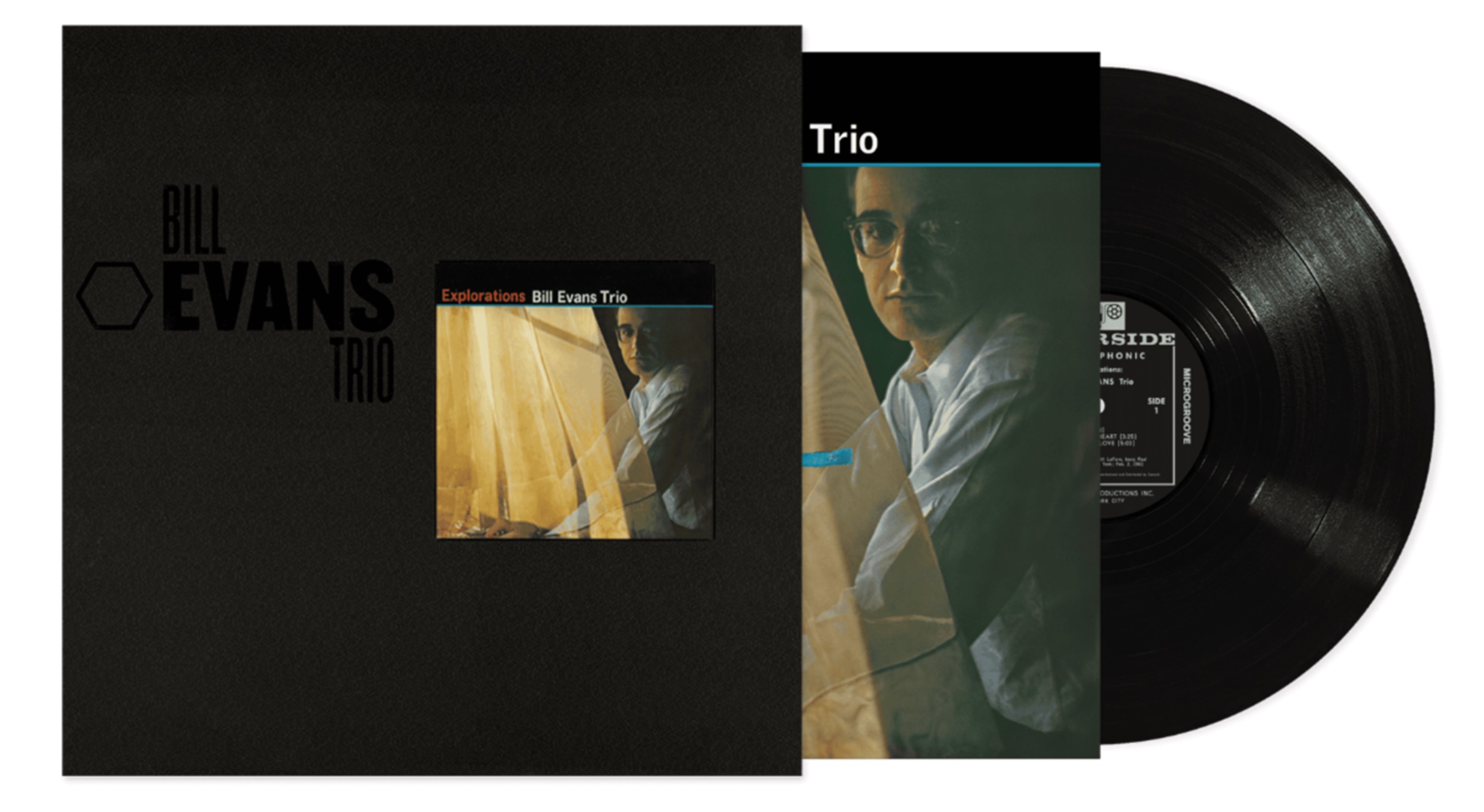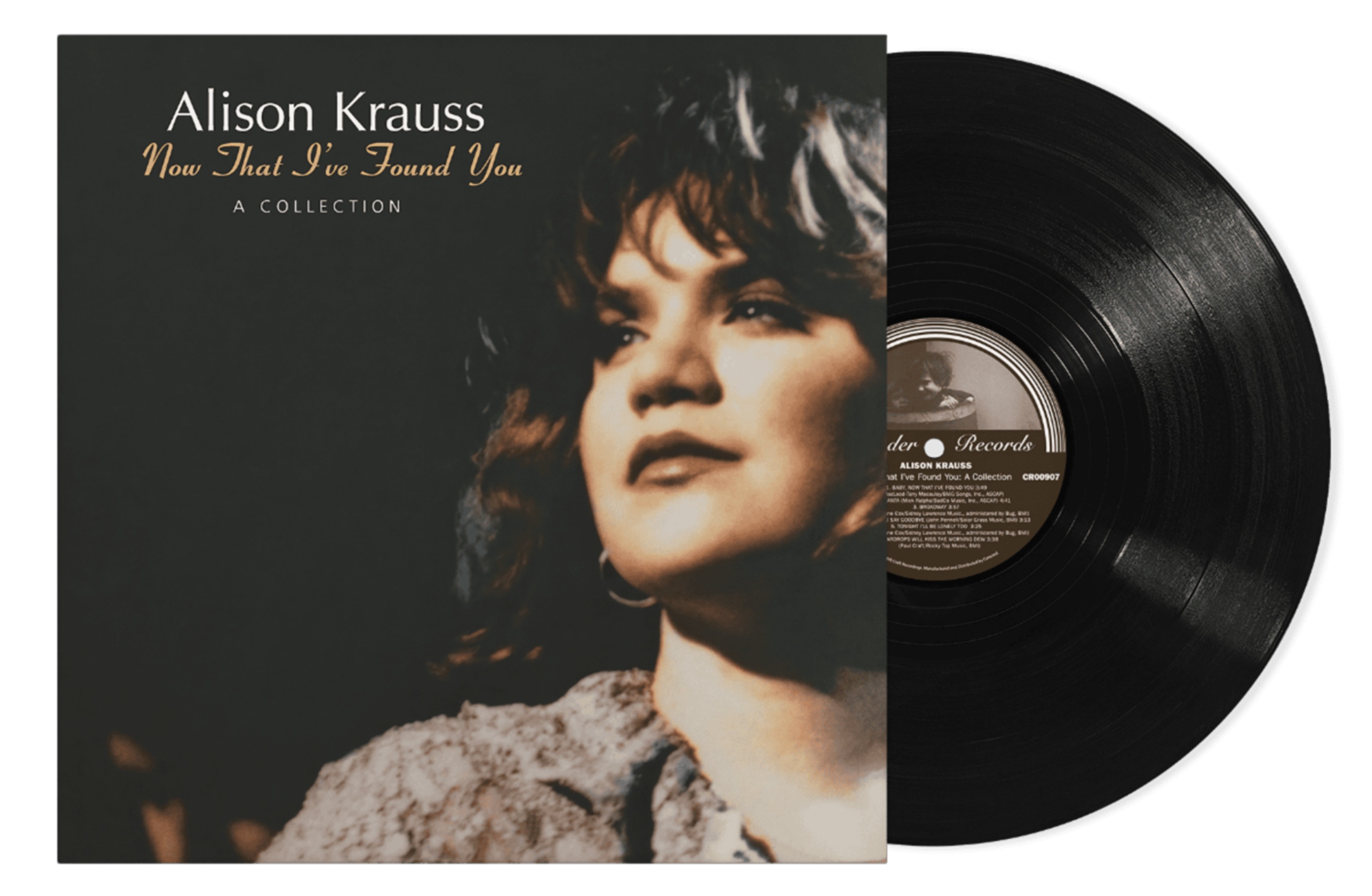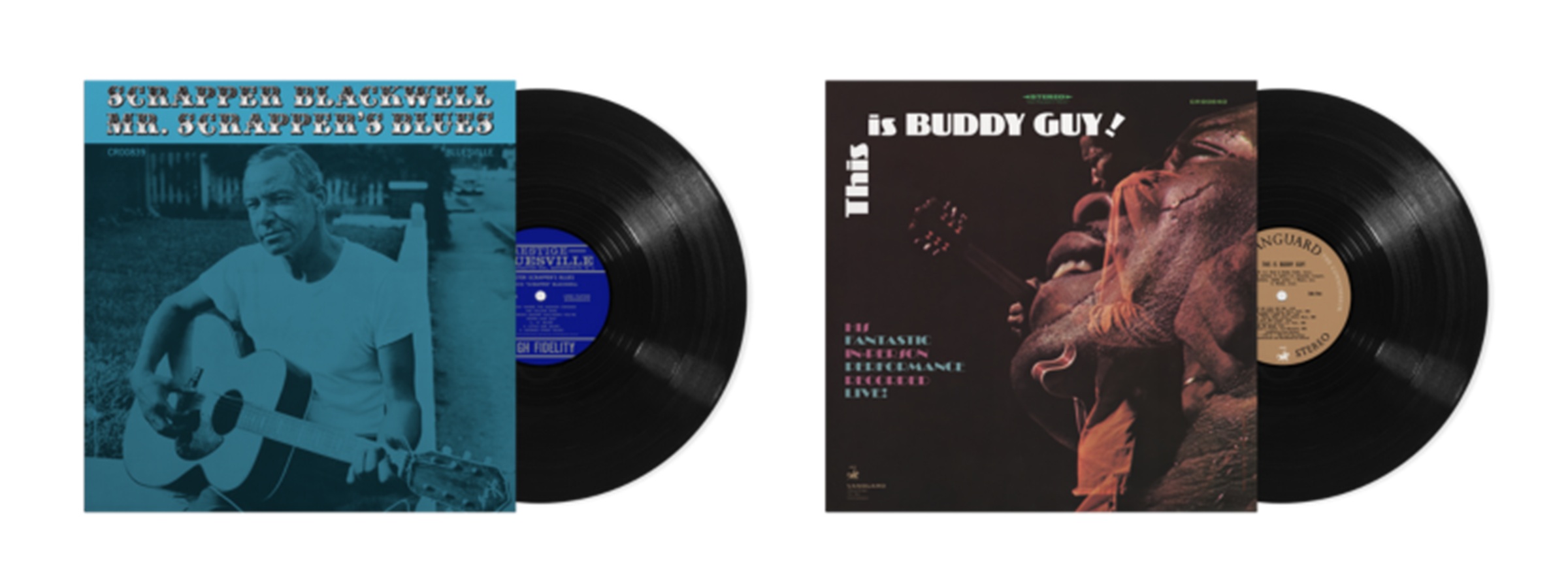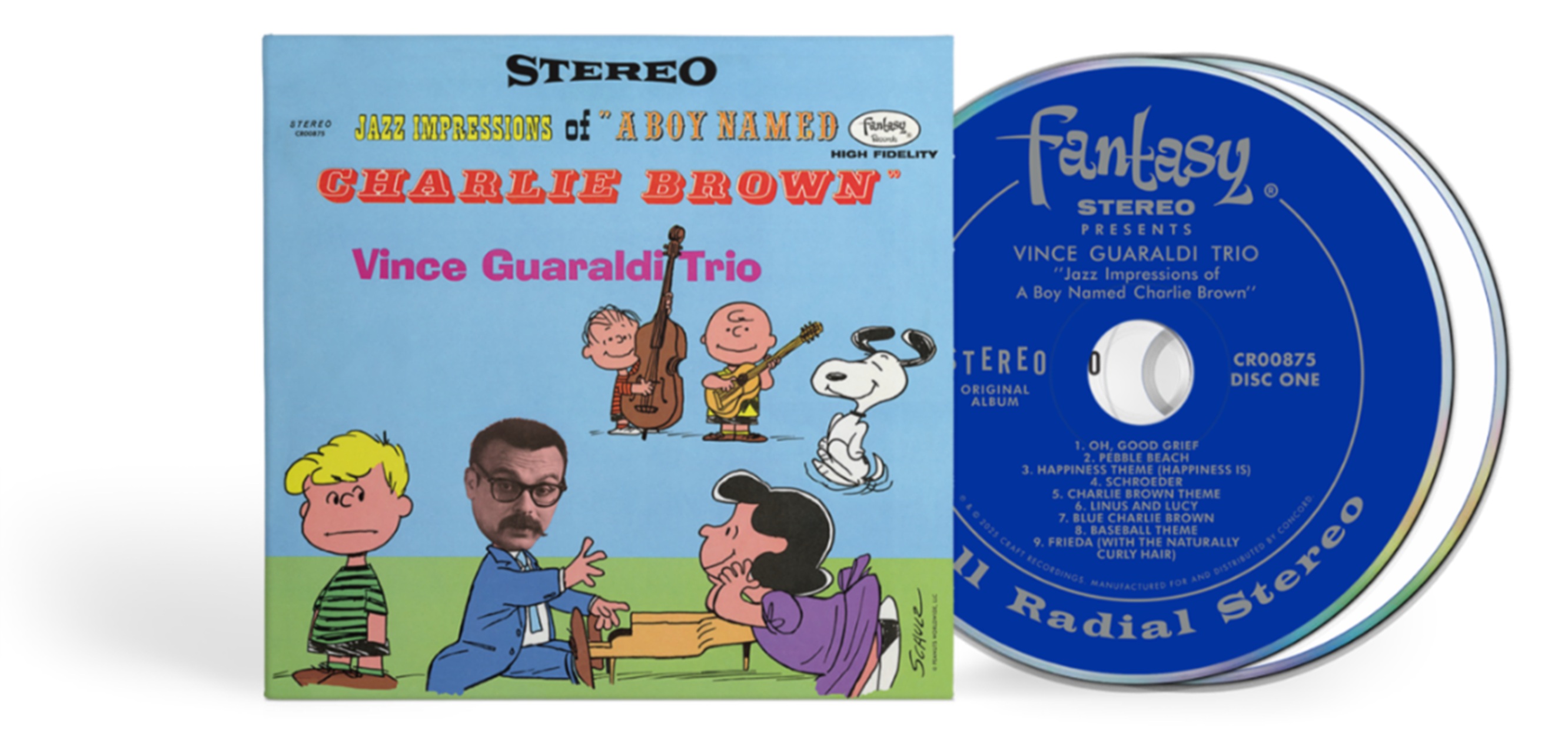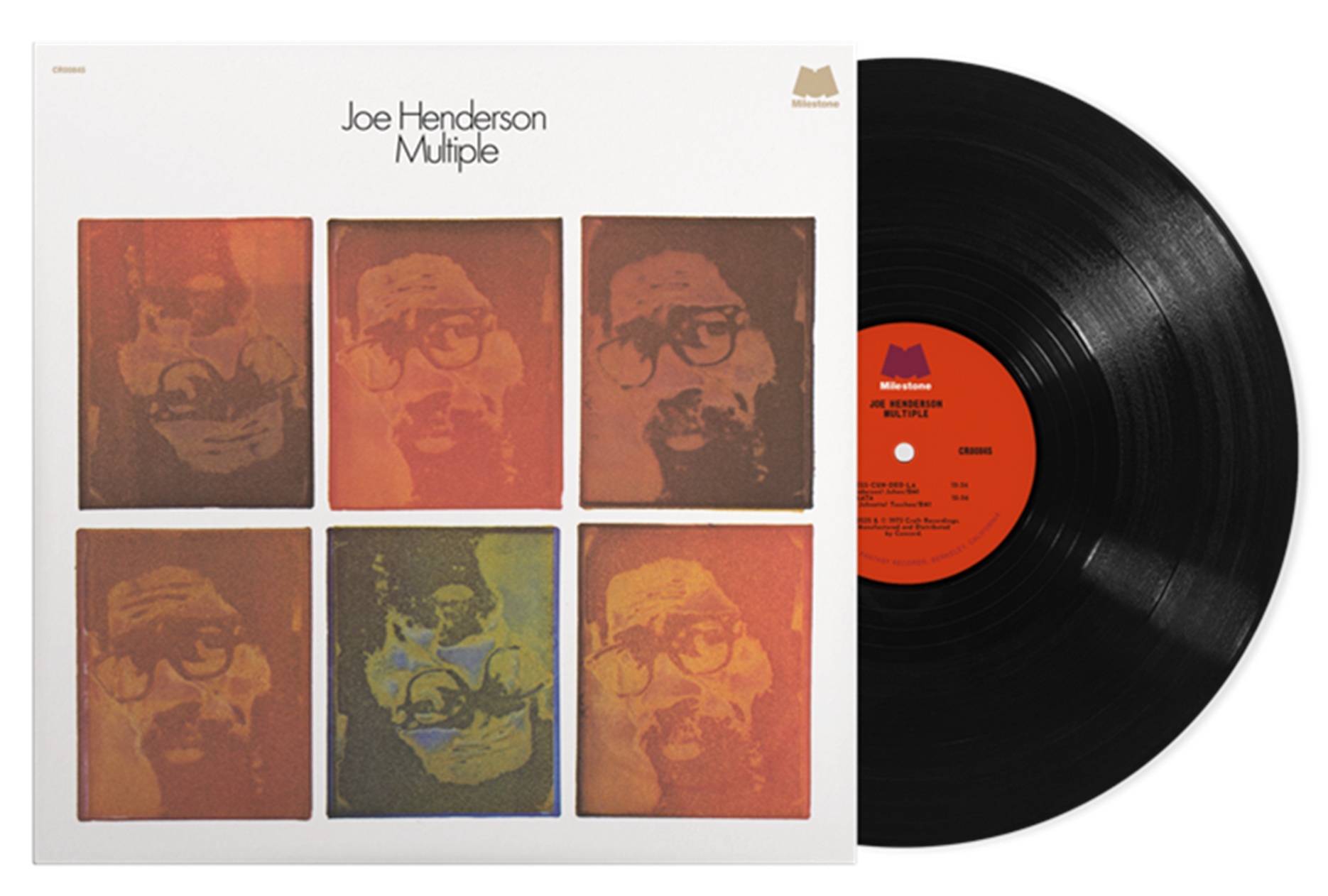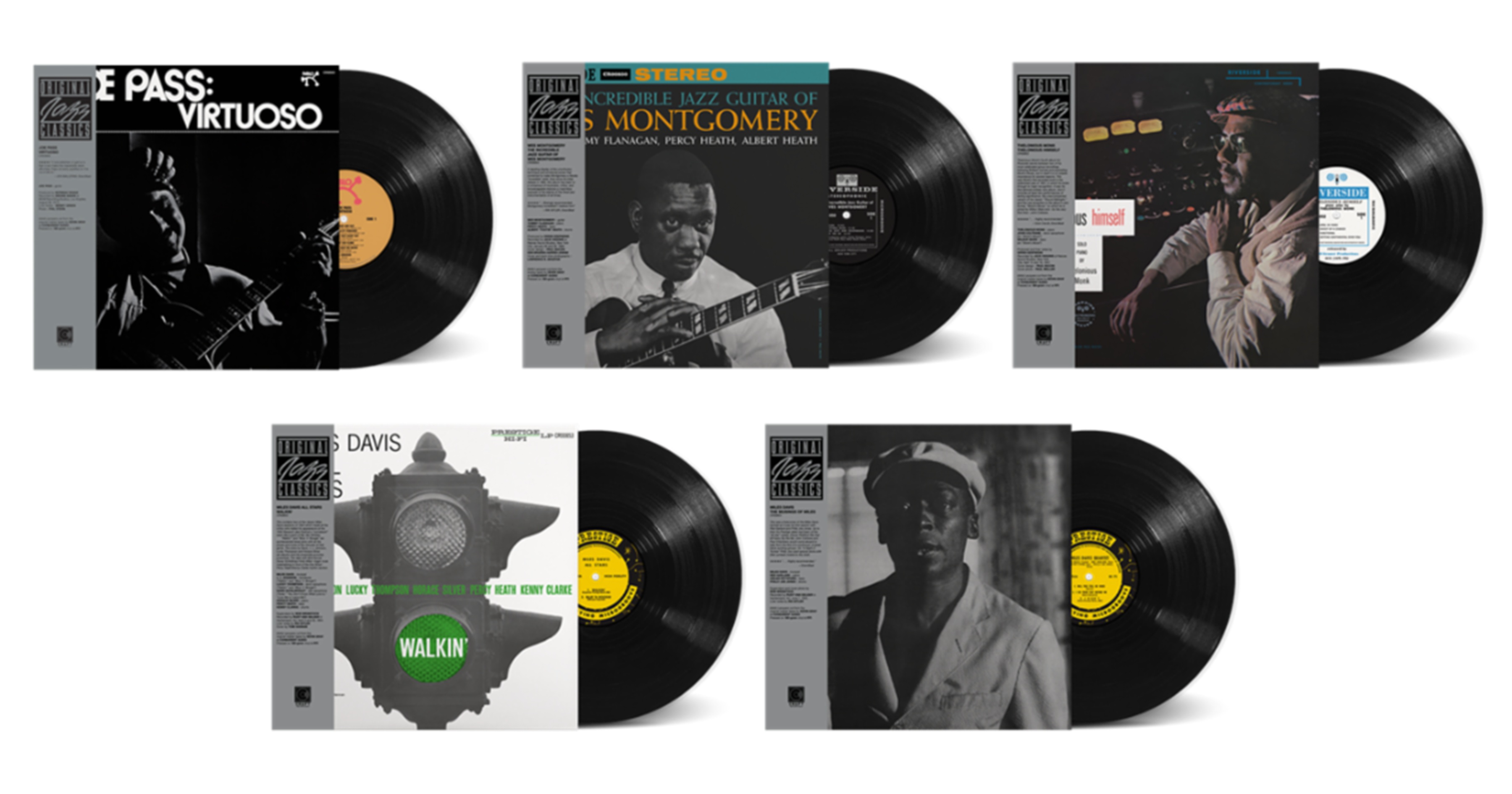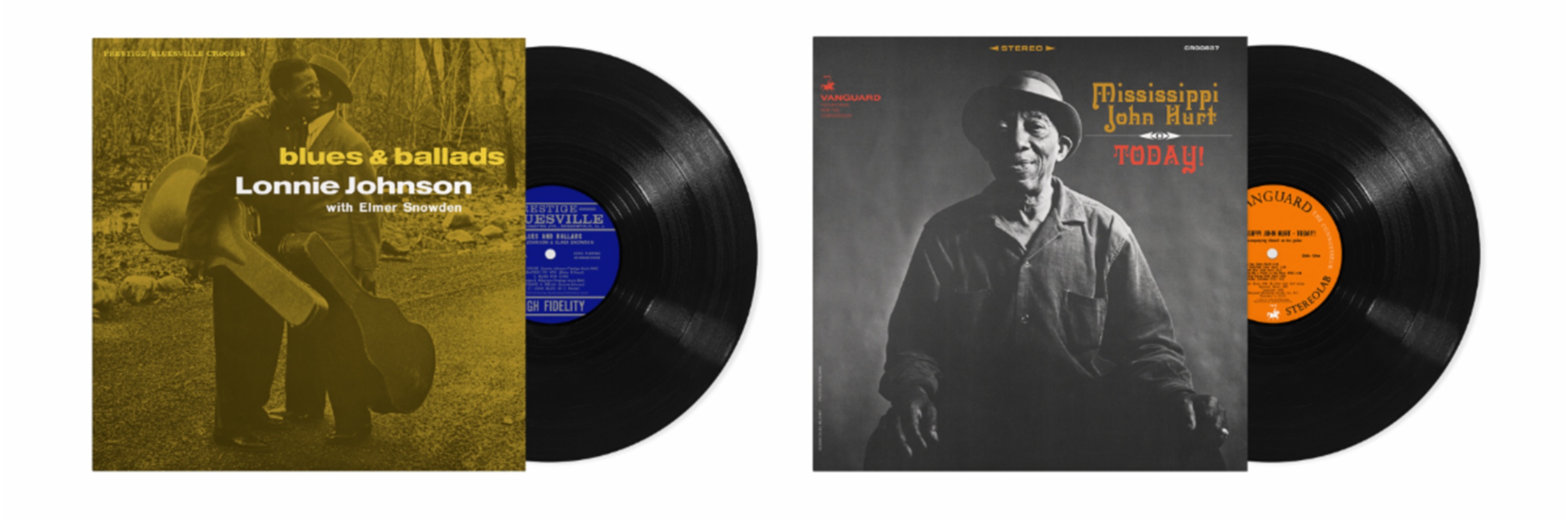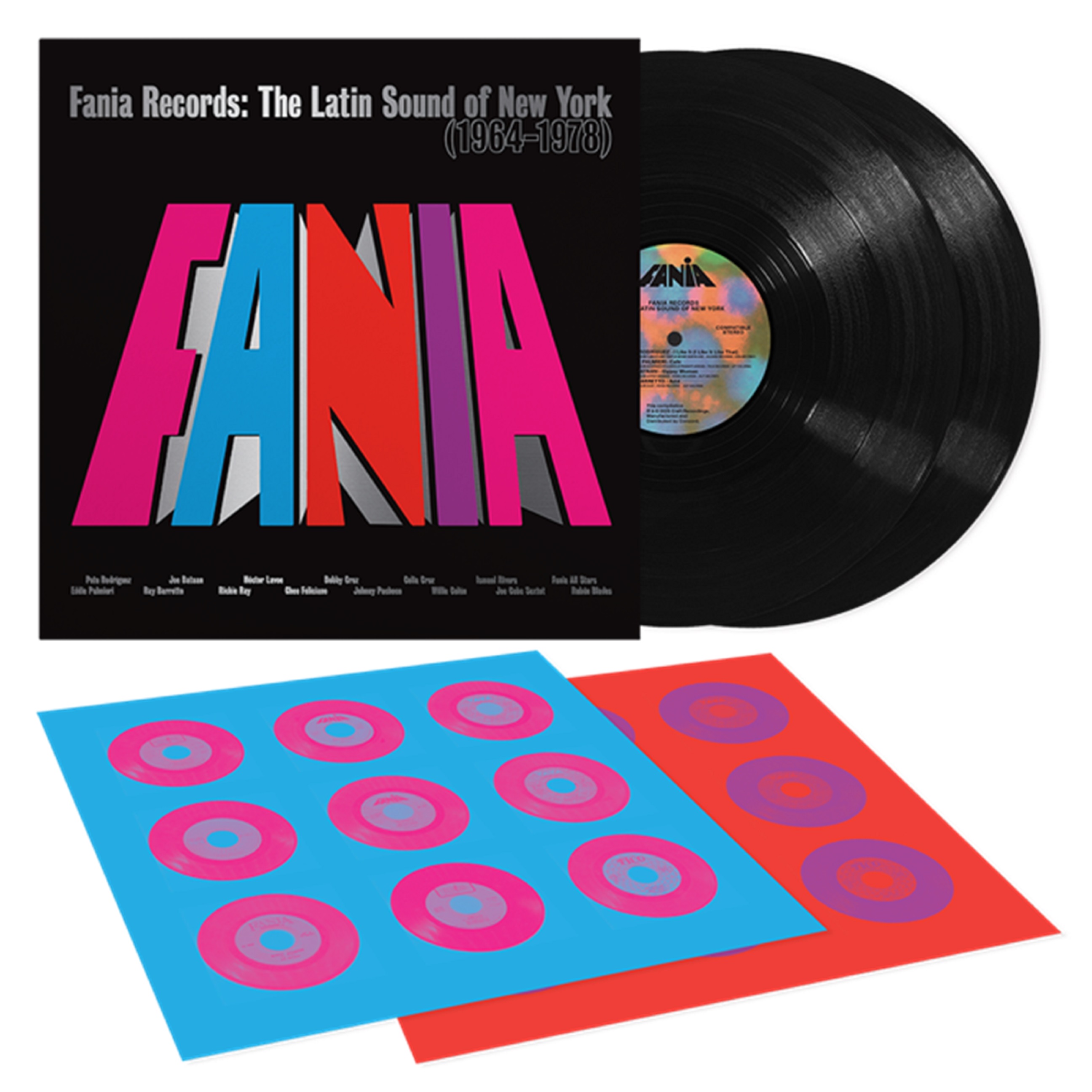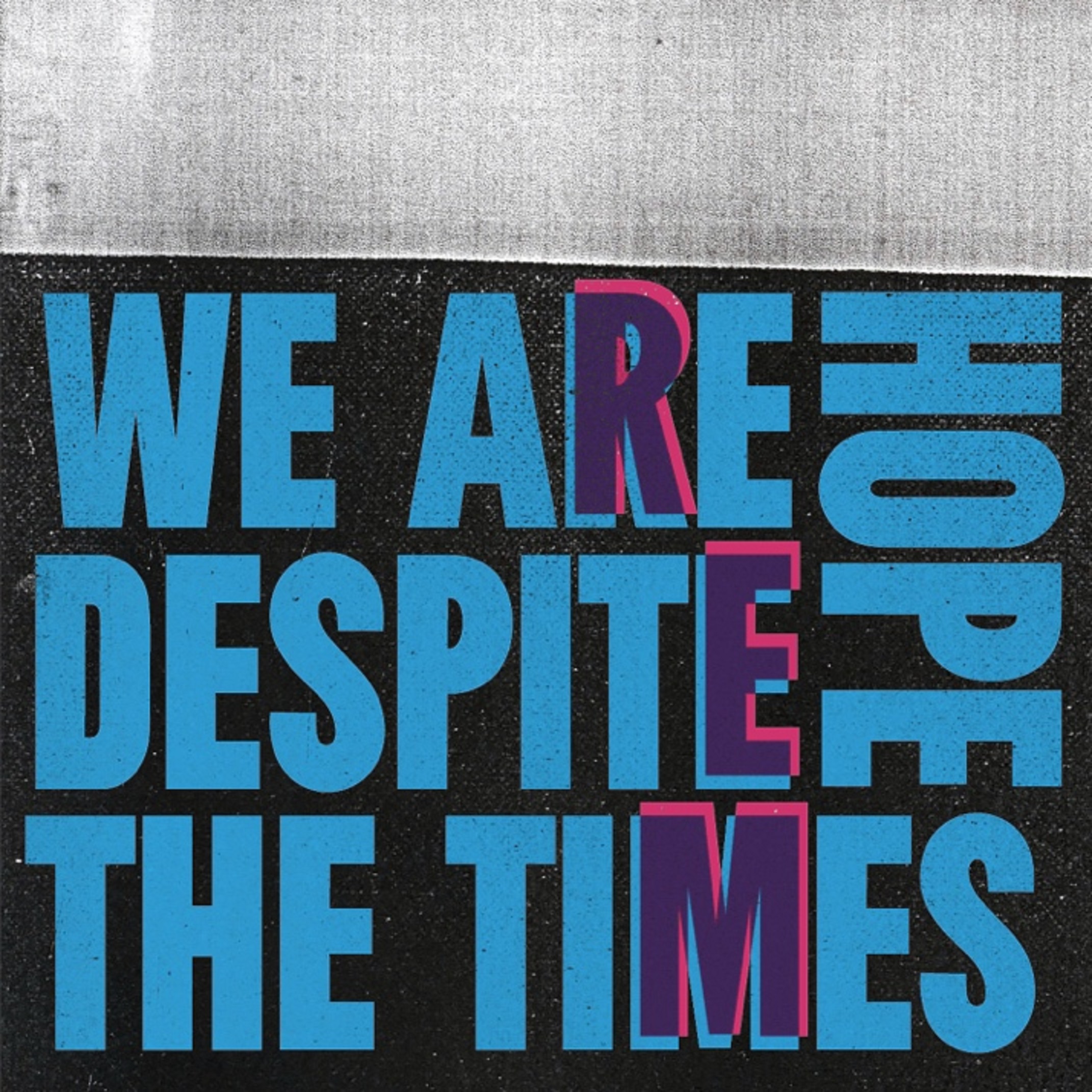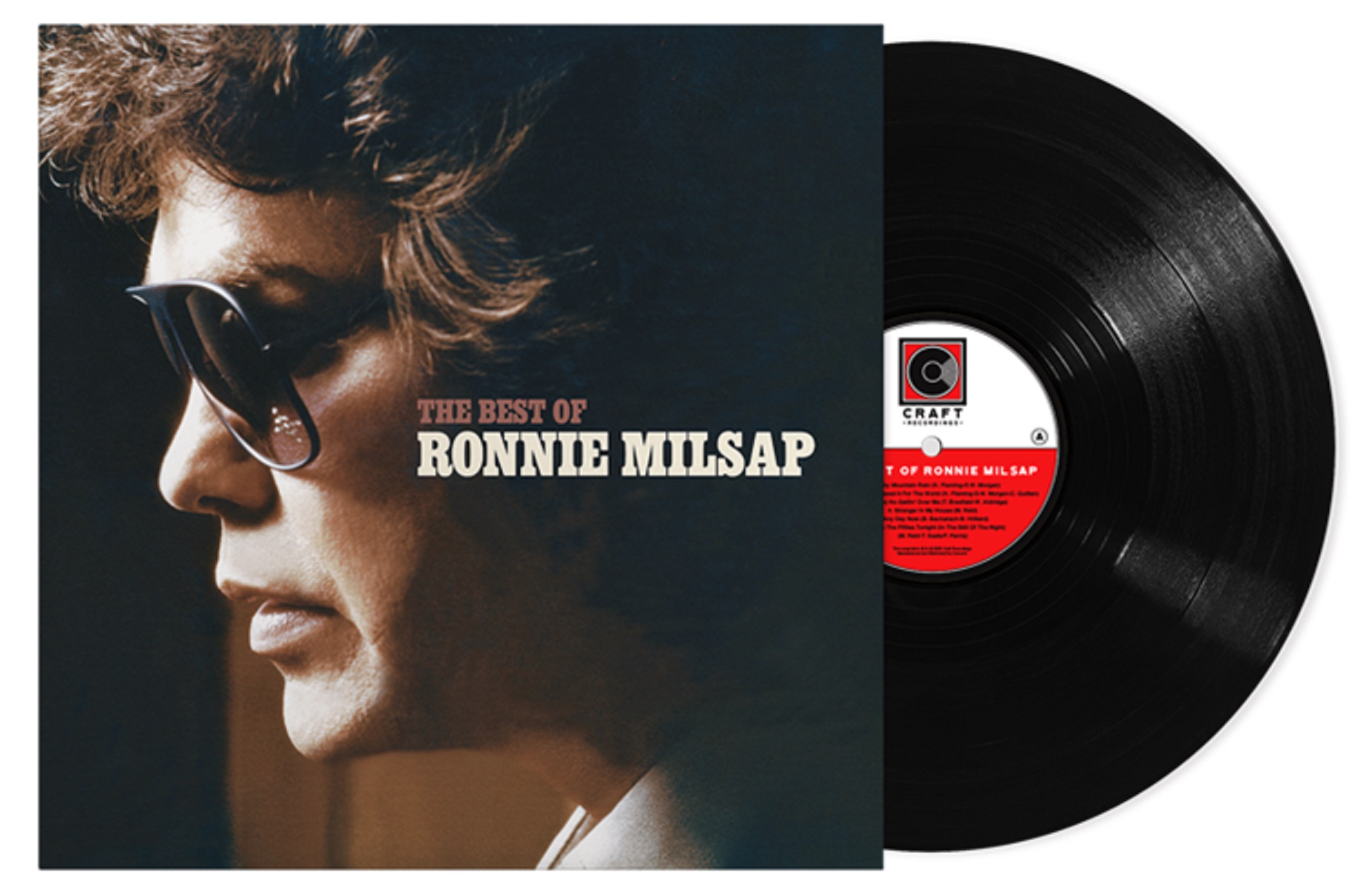Craft Recordings is proud to unveil the next installment in its acclaimed Small Batch series—a meticulously crafted reissue of the Bill Evans Trio’s final studio LP, Explorations. Arriving December 13, Explorations marks the seventh installment in the series, which has previously spotlighted jazz luminaries such as John Coltrane, Miles Davis, and Thelonious Monk. Strictly limited to 2,500 pressings worldwide and available to pre-order today, this release can be found exclusively at CraftRecordings.com or AcousticSounds.com.
As with all titles in the series, Explorations features lacquers cut from the original tapes (AAA) by Bernie Grundman and is pressed on 180-gram vinyl at RTI using Neotech’s VR900-D2 “super vinyl” compound. Using a one-step lacquer process (as opposed to the standard three-step process), this exacting technique allows for the utmost level of musical detail, clarity, and dynamics, while reducing surface noise on the record to ensure that each pressing is a true representation of the original lacquer and as close as the listener can get to the original recording. Completing the Explorations package are new liner notes by Syd Schwartz, a longtime writer, music marketing executive, and author of the popular Jazz and Coffee Substack (@jazzandcoffee on Instagram).
Praised by esteemed outlets such as Mojo (“superb clarity”), Clash (“breathtakingly majestic”), Goldmine (“sonically immaculate”), Analog Planet (“sounds better than ever”), and Tracking Angle (“excellent”), the Small Batch series features handpicked titles from Craft’s unparalleled catalog. Each pressing is presented in a foil-stamped, linen-wrapped, individually numbered slipcase. The vinyl disc—extractable through a unique, frictionless ribbon pull tab—is housed in a reproduction of the album’s original tip-on jacket from Riverside Records and protected by an archival-quality inner sleeve. Discover more today at CraftRecordings.com/SmallBatch.
One of the most influential artists in the history of jazz, Bill Evans (1929–1980) was known for his lyrical compositions, matchless approach to the piano, and, most importantly, his conversational trio interplay—a technique he developed with bassist Scott LaFaro and drummer Paul Motian in the early 1960s. Despite only being together for 20 months, the group’s groundbreaking work shifted the jazz landscape. Known as Evans’ classic trio, “their innovations were so transformative that their impact reaches bands of all sizes across multiple genres,” argues Syd Schwartz. “Wherever group improvisation and musical dialogue are found, the influence of the Bill Evans Trio is never far away.”
By 1959, Bill Evans was a fast-rising star, thanks to high-profile stints with Miles Davis (appearing on the trumpeter’s 1959 masterpiece, Kind of Blue) and composer George Russell, as well as through his earliest albums as a leader, including his 1956 debut, New Jazz Conceptions, and 1958’s Everybody Digs Bill Evans. But the pianist was poised to elevate his game and sought out fellow musicians who shared a similar musical vision—one that found them “contributing to the musical conversation equally and eschewing traditional roles in a quest to unlock deeper rhythmic and harmonic possibilities,” explains Schwartz, who adds that Evans found “palpable chemistry” with LaFaro and Motian. Over the next year and a half, the group would push the boundaries of traditional trio interplay, leaving four hugely influential albums in their wake.
That December, the trio recorded their debut, Portrait in Jazz, for Riverside Records. Schwartz writes, “While Portrait in Jazz may have been Evans’ fifth record as a leader, for many, this is the album where Bill Evans became Bill Evans. In a process of dismantling the traditional jazz trio approach—which would become more fully realized over the next year—the rhythm section emerged from the shadows, establishing a group equilibrium that expanded conversational and improvisational possibilities.”
Riding a wave of critical acclaim and adoration from fans, the trio took to the road that summer, returning to the studio on February 2, 1961, to record their follow-up, Explorations, with producer and Riverside founder Orrin Keepnews. Yet, despite the group’s success, the session was marred with tension. By the end, both Evans and Keepnews feared the worst—that the musicians’ frustrations had permeated the recordings.
However, Schwartz writes, “To the surprise of both artist and producer, the music recorded that day was BRILLIANT, with Evans remarking fifteen years later that Explorations was one of his favorite albums.” He continues, “What’s clear in listening to Explorations in full sonic glory is just how far this trio had evolved in only a year. The traditional roles of soloist and accompanist had been voted out of office, replaced with an elegant, democratic exchange of ideas that completed the illusion of one musician in three bodies.”
That concept is illustrated throughout the album’s eight tracks, as the trio deftly performs a mix of standards and modern jazz compositions. Among the highlights is the John Carisi-penned opener “Israel.” The piece, which Evans revisited several times during his career, finds the group employing the subtle technique of “forward phrasing,” in which the players hit notes just ahead of the underlying rhythm.
Another selection that became associated with Evans was “Nardis.” Written by Miles Davis for Cannonball Adderley’s 1958 LP, Portrait of a Cannonball, the tune was never recorded by Davis himself. Evans, however, would put it to tape over a dozen times in the following years. Similarly, the pianist often revisited and reimagined the ballad “Elsa,” which was composed by his close friend and frequent collaborator Earl Zindars and made its debut on Explorations.
The trio also put their unique twist on five standards: “How Deep Is the Ocean?,” “Sweet and Lovely,” “I Wish I Knew,” “Haunted Heart,” and “Beautiful Love.” The latter track, in particular, had become part of the group’s regular setlist during live shows, but, as Schwartz notes, “Their first take was unsatisfactory to Bill’s ears, requiring them to take another crack at it later that day.” The second take, which appeared on the original album, he adds, “is a superb vehicle to hear the trio finish each other’s sentences as they aspire to ego-less glory.”
Explorations was released in March 1961 to glowing reviews across the country and beyond. Months later, Billboard named it the Critics Best Piano LP of the year. In retrospectives, meanwhile, the album endures as a masterpiece, including those by All About Jazz, in which David Rickert writes, “The trio works magic here, breathing fresh air into standards... and creating the illusion that these songs were written just so someone like Evans could play them.” Thom Jurek at AllMusic adds, “Explorations is an extraordinary example of the reach and breadth of this trio at its peak.”
Weeks later, the group embarked on a now-iconic residency at the Village Vanguard—later resulting in two live albums (Sunday at the Village Vanguard and Waltz for Debby). Tragically, these would prove to be their final recordings together. Not long after, 25-year-old Scott LaFaro was killed in an automobile accident. A devastated Evans would take months to return to the stage or studio. While one can only imagine what directions the classic trio might have taken, the legacy they left behind is clear, as recordings like Explorations continue to inspire.
Evans, meanwhile, continued to innovate as a musician and composer, frequently working in the trio format that he had established with LaFaro and Motian. While his career spanned less than three decades, the prolific artist released over 50 albums as a leader, garnering 31 GRAMMY® nominations along the way. In 1994, he was honored posthumously with the GRAMMY® Lifetime Achievement Award. Cited as an influence by everyone from Herbie Hancock and Chick Corea to Eliane Elias and Robert Glasper, Bill Evans’ work continues to inspire new generations of musicians today.
Click here to pre-order Explorations.
Track List:
Side A:
Israel
Haunted Heart
Beautiful Love
Elsa
Side B:
Nardis
How Deep Is The Ocean?
I Wish I Knew
Sweet And Lovely
About Craft Recordings:
Craft Recordings is home to one of the largest and most essential collections of master recordings and compositions in the world. Its storied repertoire includes landmark releases from icons such as Joan Baez, John Coltrane, Creedence Clearwater Revival, Celia Cruz, Miles Davis, Isaac Hayes, John Lee Hooker, Little Richard, R.E.M., Joan Sebastian, and Traveling Wilburys. Plus, the catalog recordings of celebrated contemporary acts including A Day to Remember, Evanescence, Alison Krauss, Nine Inch Nails, Taking Back Sunday, and Violent Femmes, to name just a few. Renowned imprints with catalogs issued under the Craft banner include Fania, Fantasy, Fearless, Musart, Nitro, Panart, Prestige, Riverside, Rounder, Specialty, Stax, Vanguard, Varèse Sarabande, Vee-Jay, and Victory, among many others. Craft creates thoughtfully curated packages, with a meticulous devotion to quality and a commitment to preservation—ensuring that these recordings endure for new generations to discover. Craft is also home to the Billie Holiday and Tammy Wynette estates, which preserve and protect their respective names, likenesses, and music through day-to-day legacy management of these cultural trailblazers.
Craft Recordings is the catalog label team for Concord. For more info, visit CraftRecordings.com





